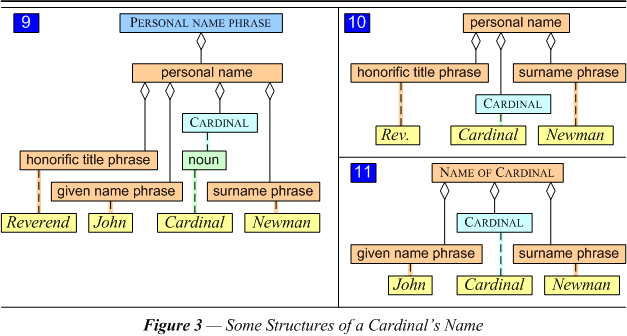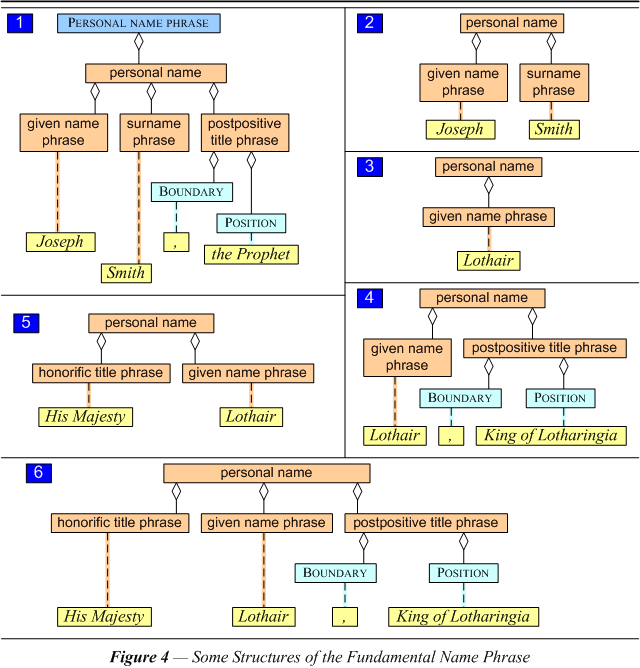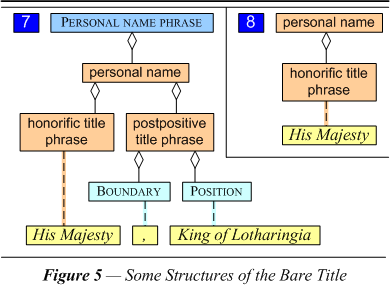1.2 PS-rule for a personal name. By comparing different personal names with each other and their parts the analyst must decide on its most appropriate phrase structure. The GT linguist uses the GT grammar to propose rules that will define the phrase structure further. To see how one might proceed consider describing the following examples:
| (1) | Joseph Smith, the Prophet | |
| (2) | Joseph Smith | |
| (3) | Lothair | |
| (4) | Lothair, King of Lotharingia | |
| (5) | His Majesty Lothair | |
| (6) | His Majesty Lothair, King of Lotharingia | |
| (7) | His Majesty, King of Lotharingia | |
| (8) | His Majesty | |
| (9) | Reverend John Cardinal Newman | |
| (10) | Rev. Cardinal Newman | |
| (11) | John Cardinal Newman |
The structures of these ten phrases share certain parts in common. It is clear to see at once that there are optional title phrases at the begining and ending. The given name and surname also seem to be optional at times. The linguist may define a personal name in terms of at least these four structures, i.e., an optional prepositive title phrase, given name phrase (optional if a prepositive title phrase is present), surname phrase (optional if a prepositive title phrase or given name is present), an optional post-positive title phrase (unless a mid-positive title phrase is present). Such observations allow the positing of the following rules:
The intent is that the first line of rule [PS2] be capable of describing the structure of (9) – (11).

The intent of the second line of rule [PS2] is to make describe the structure of (1) – (6).

The third line of rule [PS2] is intended to describe the structure of either (7) or (8).

In phrase structure rule [PS2] the only terminal constituent is the category of cardinal. This title participates in the same set of classifiers as other designations of position given in a later rule, [PS12]. The segment structure rule giving the class for cardinal follows. The dots express the fact that I have divided the class listing so as to continue onto multiple lines. The number feature of two (2) is meant to signify the relative ranking of this position within the Catholic administrative heirarchy.

